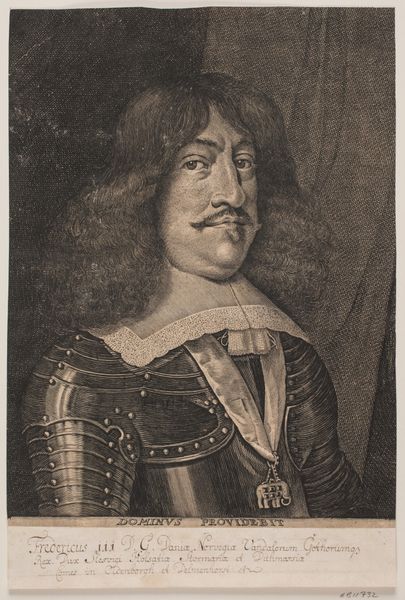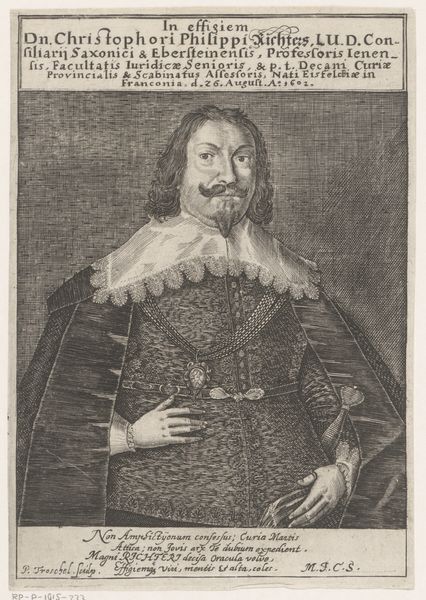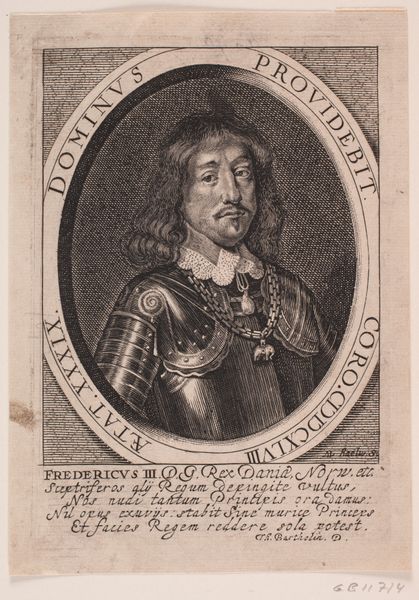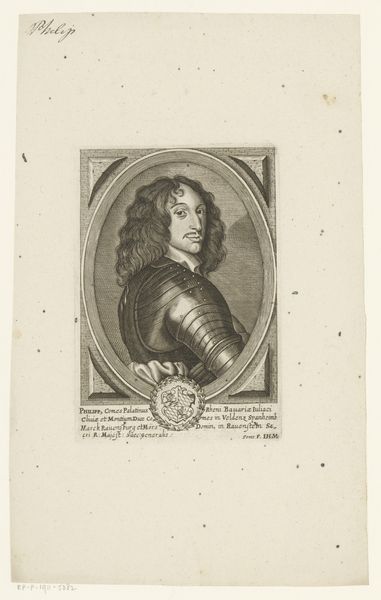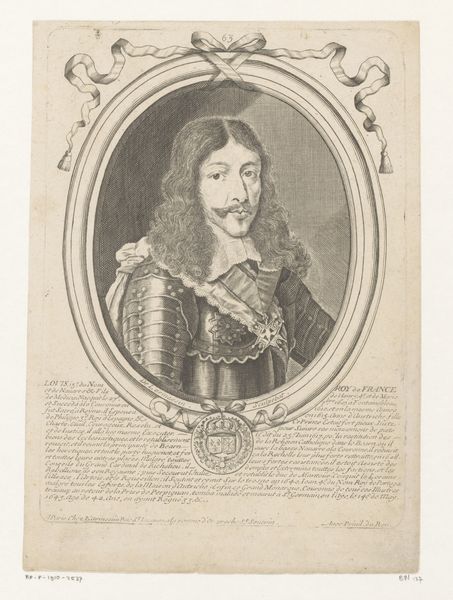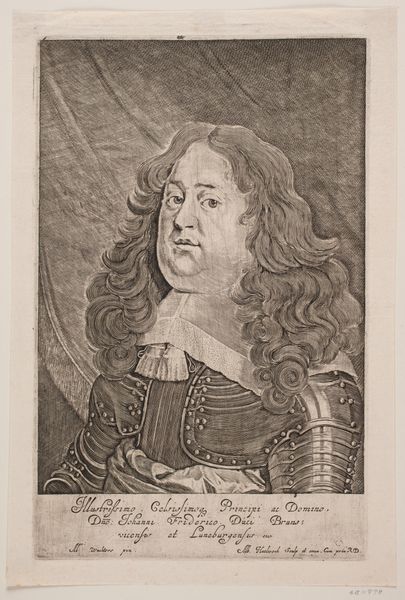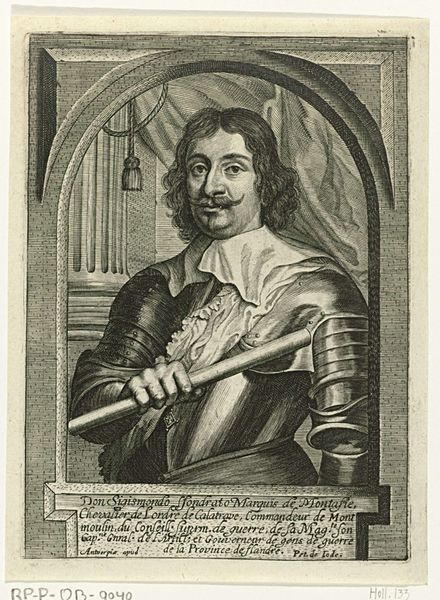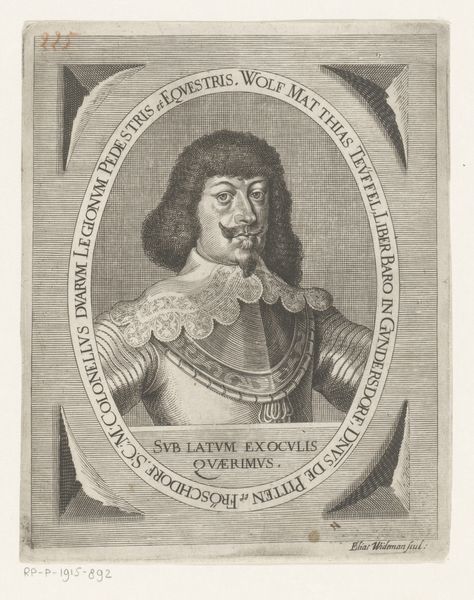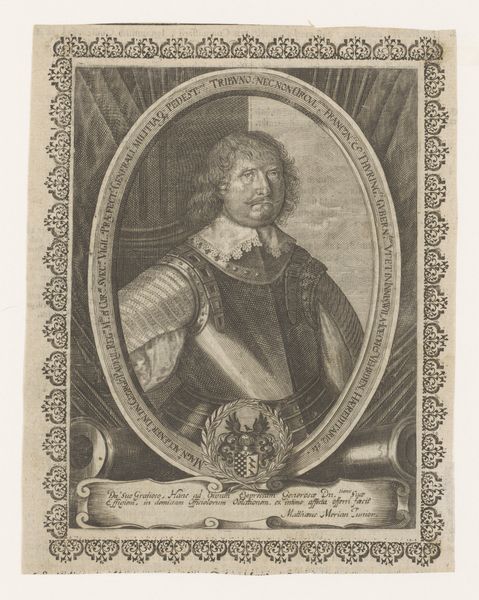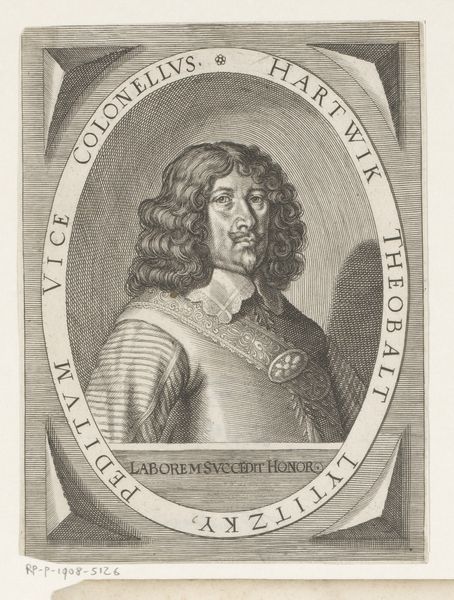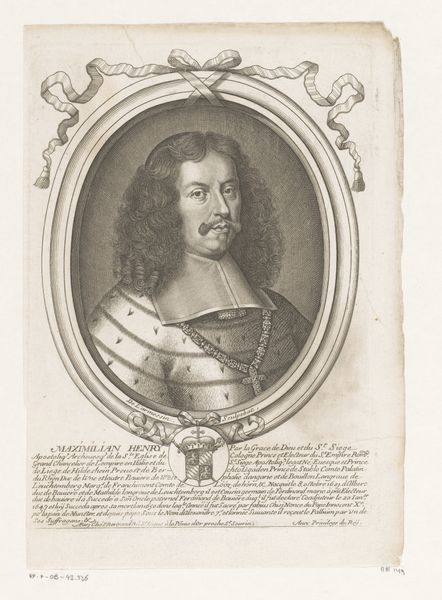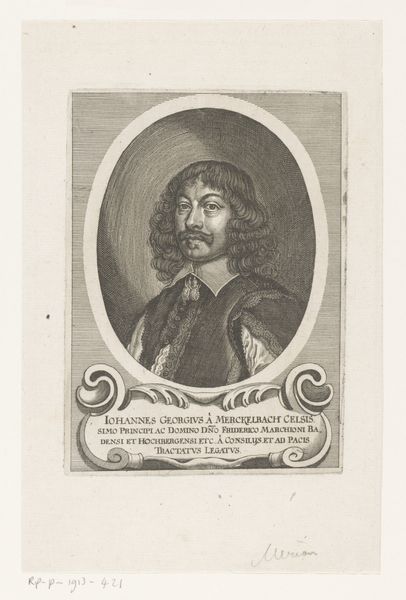
print, engraving
#
portrait
#
baroque
# print
#
portrait reference
#
portrait drawing
#
history-painting
#
engraving
Dimensions: 302 mm (height) x 231 mm (width) (bladmaal)
Curator: Before us is "Frederik III," an engraving made by Albert Haelwegh sometime between 1655 and 1659, now residing at the SMK. The stark contrasts immediately grab attention. Editor: My eye is drawn to the details of his armor and the texture created to mimic the curtains behind him, even the elephant charm is a delight. But there’s also a stern rigidity to the portrait; a sort of unflinching display of power. Curator: Exactly. Considering this is a print, we should examine the techniques involved. Haelwegh would have meticulously etched lines onto a metal plate to create the image; it's all about repeatable production. Think about the social implications; portraiture moves from painting toward print. More portraits can be created. Editor: That’s a great point! This kind of dissemination speaks volumes about seventeenth-century notions of leadership. It becomes less about unique skill, more about manufactured imagery. Consider too the historical context; Frederik's reign involved conflicts like the Dano-Swedish War. Curator: Right, and the choice of materials – the ink, the paper, even the engraver's tools – reflects a whole system of commerce and craftsmanship operating to sustain this type of production. How the patronage systems operated to propagate Frederik's vision. Editor: Absolutely. And we must examine that vision. The elaborate armor signifies strength and readiness for battle. He is presented as a defender of the realm. And this can also extend to social implications on class as only few had the capacity or position of authority in order to make these prints viable and widespread at the time. Curator: Well, Haelwegh did exceptional work. The precise rendering of the chainmail links and the soft fall of the curtain shows remarkable skill within that context of repeatable art. Editor: Indeed, this portrait encapsulates both the artist's craft and the King's crafted persona, reflective of the broader power structures at play. The art world then served the needs of rulers much as it can even today. Curator: Precisely. Considering how he wanted to disseminate his image and how those images could even serve today. A very curious piece to look at indeed. Editor: Yes. It's fascinating how analyzing one print opens a wider view onto art history. The medium in many ways is also the message.
Comments
No comments
Be the first to comment and join the conversation on the ultimate creative platform.
